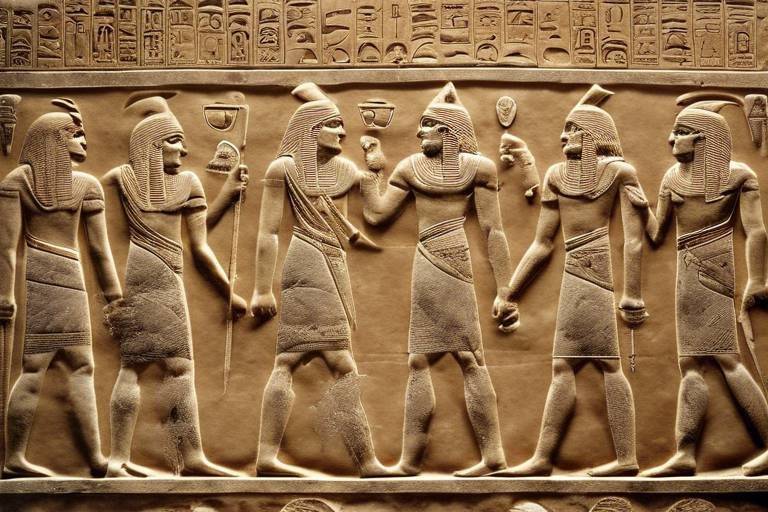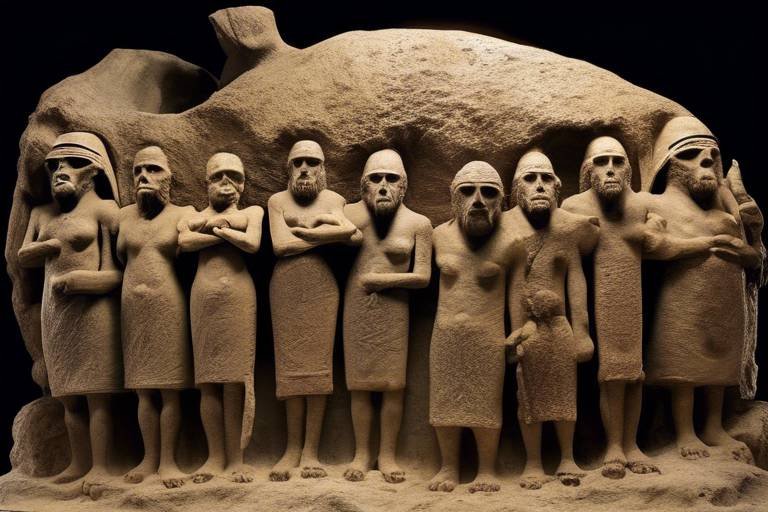The Influence of Ancient Egypt on Art and Architecture
Ancient Egypt's profound impact on art and architecture reverberates through time, shaping the creative expressions of today. The intricate symbolism embedded in ancient Egyptian art, from hieroglyphs to animal motifs, served as a conduit for conveying profound religious beliefs and narratives. These symbolic elements not only adorned temples and tombs but also inspired contemporary artists to imbue their works with deeper meanings and hidden messages.
Moreover, the architectural innovations pioneered by ancient Egypt, epitomized by the colossal pyramids and sophisticated building techniques, laid the foundation for architectural practices that endure to this day. The grandeur and precision of ancient Egyptian structures continue to awe and inspire architects worldwide, influencing the design of modern buildings with echoes of Egypt's architectural heritage.
The legacy of ancient Egypt extends beyond symbolism and architecture, permeating modern art movements and sculptural practices. The fascination with Egyptian art during the 19th and 20th centuries catalyzed artistic movements like Art Deco and Cubism, infusing them with a sense of mystique and exoticism. The stylized forms and idealized figures of Egyptian sculpture continue to captivate contemporary sculptors, breathing life into timeless aesthetic traditions.
Contemporary designers, in a nod to Egypt's enduring allure, often incorporate ancient Egyptian motifs into diverse design disciplines, infusing them with a touch of elegance and enigma. The revival of these timeless motifs in fashion, interior decoration, and other creative fields serves as a testament to the enduring appeal of ancient Egyptian art and design.
Furthermore, the artistic techniques honed by ancient Egyptian artisans, such as relief carving and vibrant painting, remain relevant and influential in today's artistic landscape. Artists across various mediums draw inspiration from these age-old techniques, infusing their creations with a sense of history and craftsmanship that transcends time.
As custodians of Egypt's artistic legacy, preservation and conservation efforts are paramount in safeguarding these cultural treasures for future generations. The challenges and strategies involved in preserving ancient Egyptian art and architecture underscore the importance of maintaining a link to the past while embracing the innovations of the present.

Symbolism in Ancient Egyptian Art
Ancient Egypt's rich artistic and architectural legacy continues to inspire contemporary creators worldwide. This article explores how the motifs, techniques, and symbolism of ancient Egyptian art and architecture have influenced modern artistic expressions and architectural designs.
The intricate symbolism in ancient Egyptian art, such as the use of hieroglyphs and animal motifs, played a significant role in conveying religious beliefs and stories. Understanding these symbols enhances the appreciation of both ancient and modern art.
Ancient Egyptian art was not merely decorative but carried deep symbolic meanings that reflected the society's spiritual beliefs and cultural values. Hieroglyphs, the sacred writing system of the Egyptians, were often incorporated into artworks to convey stories of gods, pharaohs, and the afterlife. Animals like the falcon, representing the god Horus, or the scarab beetle, symbolizing rebirth, were commonly depicted to convey specific meanings and invoke powerful emotions.
Moreover, the colors used in ancient Egyptian art, such as blue for the sky and water, or gold for the sun and eternity, held symbolic significance. These color choices were not arbitrary but were carefully selected to convey specific messages and evoke particular feelings in the viewer.
The use of symbolism in ancient Egyptian art went beyond mere aesthetics; it served as a visual language that communicated complex ideas and beliefs to both the elite and the common people. By deciphering these symbols, modern viewers can gain profound insights into the spiritual and cultural world of ancient Egypt.
Exploring the symbolism in ancient Egyptian art provides a gateway to understanding the profound depth of meaning embedded in each artistic creation. By unraveling the mysteries of hieroglyphs and deciphering the symbolic representations of gods and animals, one can embark on a captivating journey through the rich tapestry of Egyptian art and its enduring influence on contemporary artistic expressions.

Architectural Innovations of Ancient Egypt
Ancient Egypt's architectural innovations stand as a testament to the ingenuity and engineering prowess of this ancient civilization. One of the most iconic architectural achievements of ancient Egypt is the construction of massive pyramids, such as the Great Pyramid of Giza. These monumental structures, built as tombs for pharaohs, showcase the Egyptians' mastery of stone masonry and precise engineering.
Furthermore, ancient Egyptian architects developed advanced building techniques to ensure the durability and grandeur of their structures. The use of massive stone blocks, carefully cut and fitted together, allowed for the creation of enduring monuments that have withstood the test of time. The architectural precision displayed in structures like temples and tombs reflects the Egyptians' meticulous attention to detail and dedication to creating lasting legacies.
A notable architectural innovation of ancient Egypt is the development of the pylon, a monumental gateway that served as the entrance to temples. These imposing structures, adorned with intricate carvings and hieroglyphs, symbolized the boundary between the earthly realm and the sacred space within the temple. The design and decoration of pylons exemplify the Egyptians' belief in the divine and their reverence for the gods.
Ancient Egyptian architecture also featured the use of obelisks, tall, slender pillars topped with pyramid-like shapes. These monumental structures, often erected in pairs at the entrances of temples, served as symbols of the sun god Ra and were believed to harness the sun's energy. The obelisks' sleek design and symbolic significance highlight the Egyptians' spiritual connection to the cosmos and their architectural innovation in creating monumental landmarks.

Impact on Modern Art Movements
Ancient Egyptian art has had a profound impact on modern art movements, shaping the creative landscape of the 19th and 20th centuries. The fascination with Egyptian artistry during this period sparked a wave of inspiration that rippled through various artistic genres, leaving an indelible mark on the art world.
One of the most notable influences of ancient Egyptian art can be seen in the emergence of Art Deco and Cubism. Artists and designers of these movements drew upon the stylized forms, geometric patterns, and symbolic motifs found in Egyptian art to create bold and innovative works that challenged traditional artistic norms.
The use of hieroglyphs, animal imagery, and intricate patterns in ancient Egyptian art resonated with modern artists seeking new forms of expression. The symbolic depth and visual richness of Egyptian art provided a fertile ground for experimentation and reinterpretation, leading to the development of fresh artistic styles that captivated audiences around the world.
Moreover, the emphasis on symmetry, balance, and harmony in Egyptian art influenced the principles of composition and design in modern art movements. Artists looked to the mathematical precision and aesthetic elegance of Egyptian artworks as a source of inspiration, infusing their creations with a sense of order and beauty reminiscent of ancient Egypt.
As contemporary artists continue to draw inspiration from the artistic legacy of ancient Egypt, the legacy of this ancient civilization lives on in the vibrant tapestry of modern art movements. The enduring allure of Egyptian artistry serves as a testament to the timeless power and relevance of artistic traditions that transcend centuries.
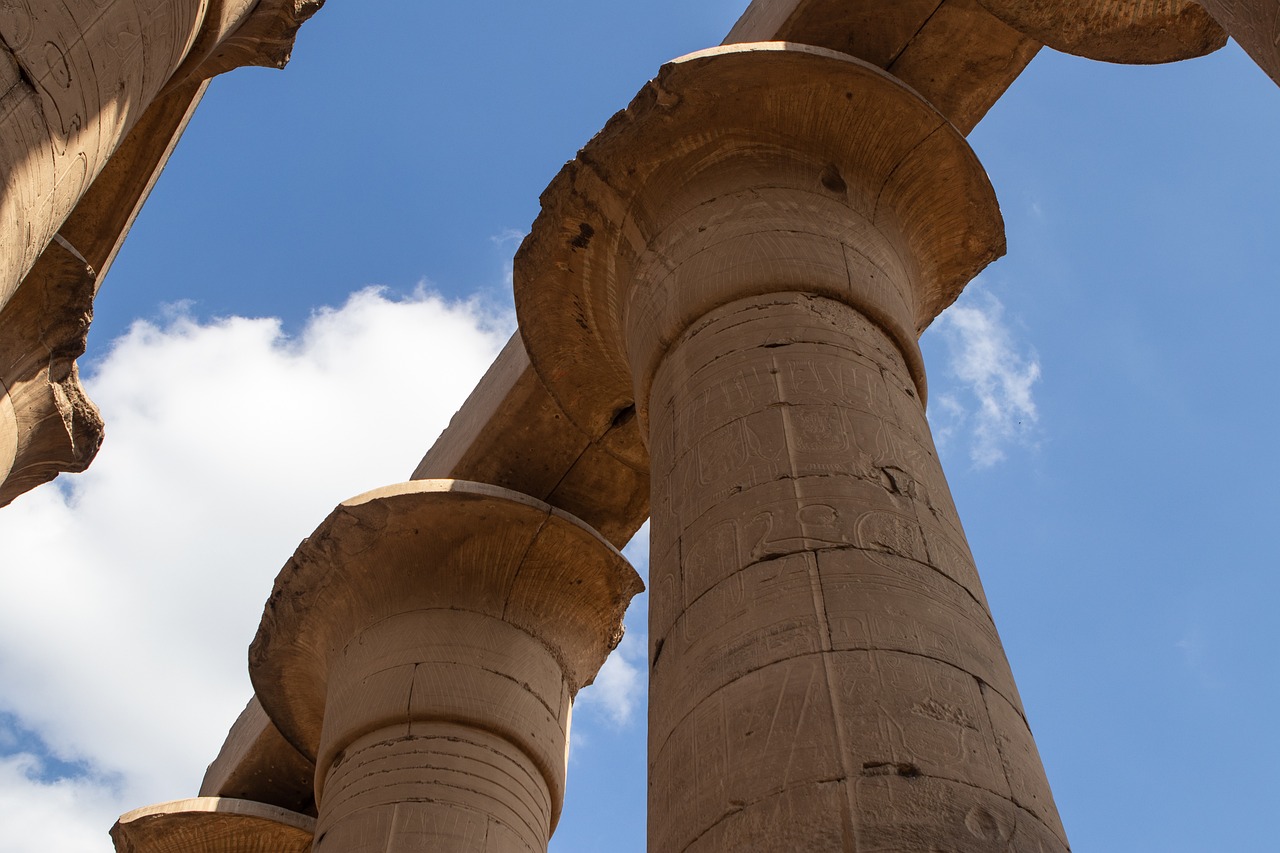
Egyptian Influence on Sculpture
When exploring the influence of ancient Egypt on sculpture, one cannot overlook the profound impact it has had on the art form. Ancient Egyptian sculpture, with its stylized forms and idealized figures, set a standard that has resonated through the centuries. The Egyptians' emphasis on permanence and the afterlife is reflected in the enduring nature of their sculptures, which continue to inspire artists today.
One of the defining characteristics of Egyptian sculpture is its symbolic representation of the human form. Figures were often depicted in a rigid and frontal pose, emphasizing symmetry and balance. This formal approach to sculpting influenced artists in ancient Egypt and beyond, shaping the way the human figure was portrayed in art.
A key aspect of Egyptian sculpture is the use of symbolism to convey meaning. Hieroglyphs and symbolic gestures were commonly incorporated into sculptures to communicate religious beliefs, stories, and the status of the individual being depicted. This symbolic language added depth and significance to the artworks, inviting viewers to interpret and engage with the sculptures on a deeper level.
A notable example of the Egyptian influence on sculpture is the concept of the ka statue, which represented the spirit or essence of a person. These statues were believed to provide a home for the soul in the afterlife, emphasizing the Egyptians' belief in the continuity of existence beyond death. The idea of capturing the essence of a person through sculpture has endured throughout art history, reflecting the enduring legacy of Egyptian sculptural traditions.

Architectural Elements in Modern Buildings
Architectural Elements in Modern Buildings have been greatly influenced by the iconic structures of ancient Egypt. Architects around the world have reinterpreted elements such as columns, pylons, and obelisks to create contemporary buildings that pay homage to Egypt's architectural heritage. These elements not only add a sense of grandeur and timelessness to modern structures but also serve as a reminder of the enduring legacy of ancient Egyptian architecture.

Revival of Egyptian Motifs in Design
Contemporary designers have found a treasure trove of inspiration in the ancient motifs of Egypt. The iconic symbols and patterns that once adorned the walls of tombs and temples now find new life in modern design disciplines. From the mesmerizing geometric shapes to the mystical animal figures, Egyptian motifs bring a sense of exoticism and timelessness to contemporary creations.
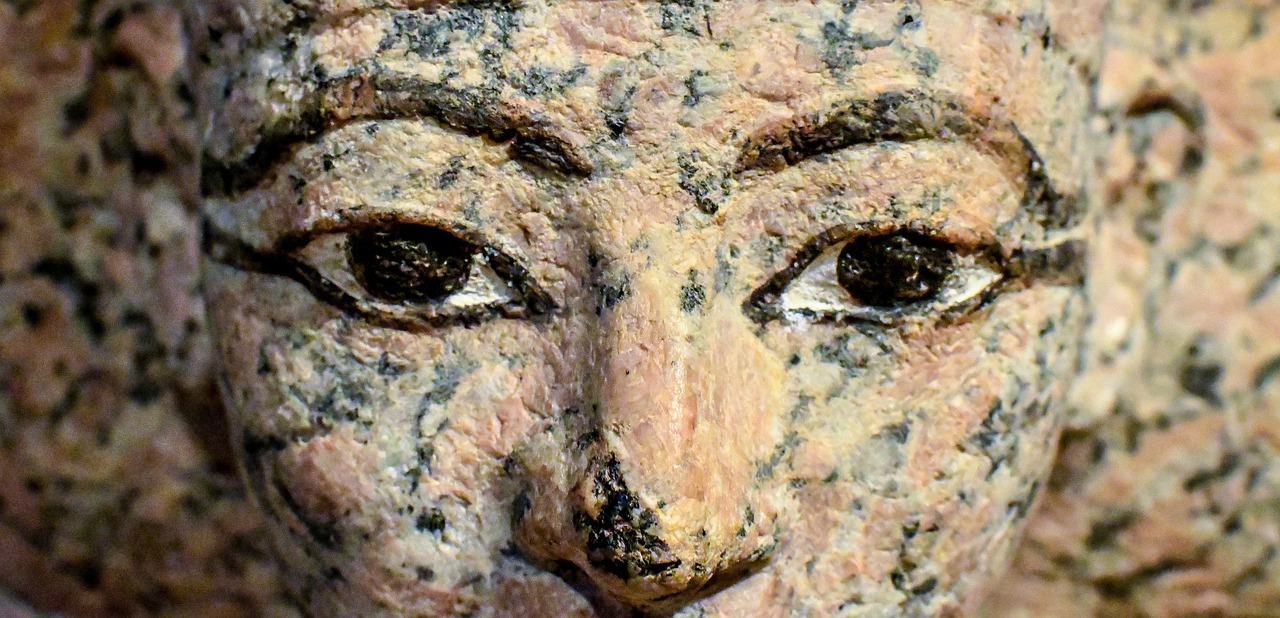
Legacy of Egyptian Artistic Techniques
The legacy of Egyptian artistic techniques is a testament to the unparalleled skill and creativity of ancient Egyptian artisans. The intricate artistry displayed in various mediums, from relief carvings to paintings, continues to captivate and inspire artists across the globe. The mastery of techniques such as detailed brushwork, precise sculpting, and symbolic storytelling has left an indelible mark on the art world.
One of the most renowned artistic techniques of ancient Egypt is relief carving, where images and hieroglyphs were meticulously carved into stone surfaces to convey narratives and beliefs. The three-dimensional quality of relief carvings brought scenes to life, creating a sense of depth and movement that remains awe-inspiring to this day.
Painting was another prominent artistic technique in ancient Egypt, with artists using vibrant colors and symbolic motifs to adorn tombs, temples, and everyday objects. The use of natural pigments and meticulous attention to detail resulted in captivating artworks that have stood the test of time.
Furthermore, the emphasis on idealized forms and symbolic representations in Egyptian artistry has influenced artistic practices beyond the ancient world. The stylized depictions of pharaohs, gods, and mythical creatures reflect a harmonious blend of realism and symbolism that continues to resonate with contemporary artists seeking to imbue their work with deeper meaning.
The legacy of Egyptian artistic techniques serves as a source of inspiration and admiration for creatives seeking to honor the craftsmanship and ingenuity of the ancient Egyptians. By studying and emulating these time-honored techniques, artists pay homage to a rich artistic heritage that remains relevant and influential in the modern art world.
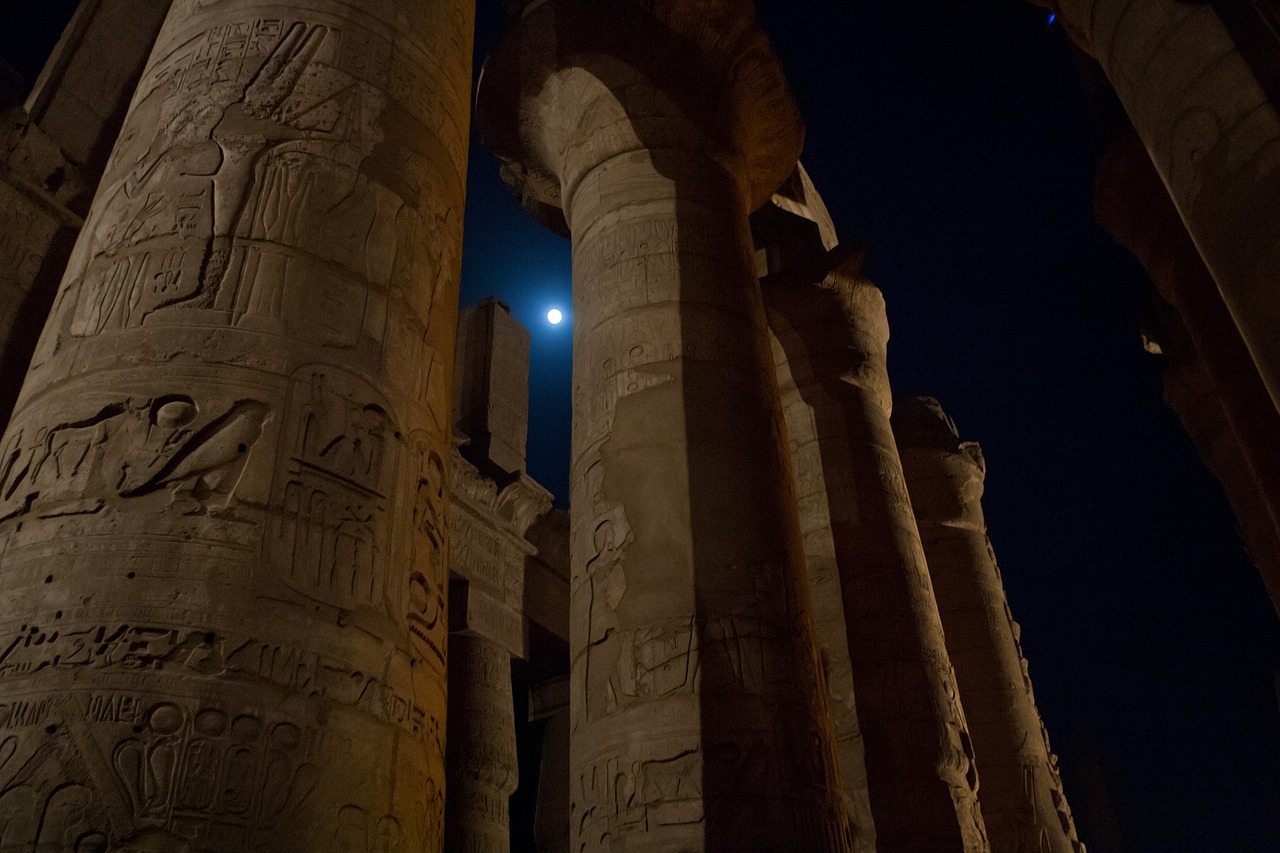
Preservation and Conservation Efforts
Preservation and conservation efforts are paramount in safeguarding the invaluable artistic and architectural treasures of ancient Egypt. The delicate balance between preserving these artifacts for future generations and allowing public access requires meticulous planning and execution. Conservationists employ a variety of techniques to protect ancient artifacts from environmental degradation, such as temperature and humidity control in museum settings. Additionally, ongoing research and restoration projects aim to maintain the integrity of ancient Egyptian artworks while ensuring their longevity.
One of the key challenges in preserving ancient Egyptian art and architecture is the threat of deterioration due to factors like pollution, climate change, and tourism. Conservation experts work tirelessly to develop innovative solutions to combat these risks and prevent irreversible damage to the cultural heritage of Egypt. Collaborative efforts between local authorities, international organizations, and academic institutions play a crucial role in implementing sustainable conservation practices and raising awareness about the importance of preserving these historical treasures.
Furthermore, the digitization of ancient Egyptian artifacts has emerged as a valuable tool in conservation efforts, allowing for detailed documentation and analysis without compromising the physical integrity of the originals. By creating digital replicas of artworks and architectural structures, researchers can study and monitor their condition over time, facilitating proactive conservation measures.
Education and public engagement also play a vital role in the preservation of Egypt's artistic legacy. By raising awareness about the significance of ancient Egyptian art and architecture, conservationists aim to foster a sense of stewardship among the public and encourage responsible tourism practices. Through educational programs, exhibitions, and outreach initiatives, efforts are made to ensure that the cultural heritage of ancient Egypt remains accessible and appreciated by future generations.
Frequently Asked Questions
- What are some common symbols found in ancient Egyptian art?
Ancient Egyptian art is rich in symbolism, with common motifs including the Ankh symbol representing life, the Eye of Horus symbolizing protection, and the Scarab beetle symbolizing rebirth.
- How did ancient Egyptian architecture influence modern building designs?
Ancient Egyptian architecture, known for its monumental structures like pyramids and temples, inspired modern architects to incorporate elements such as columns, obelisks, and hieroglyphic decorations into their designs, creating a fusion of ancient and contemporary styles.
- What artistic techniques were developed by ancient Egyptian artisans?
Ancient Egyptian artisans mastered techniques like relief carving, painting, and sculpting, creating intricate and detailed artworks that continue to influence artists today in various mediums.
- Why is the preservation of ancient Egyptian art and architecture important?
Preservation efforts are crucial to safeguarding Egypt's cultural heritage for future generations, ensuring that the artistic and architectural treasures of ancient Egypt remain intact and accessible to all.








